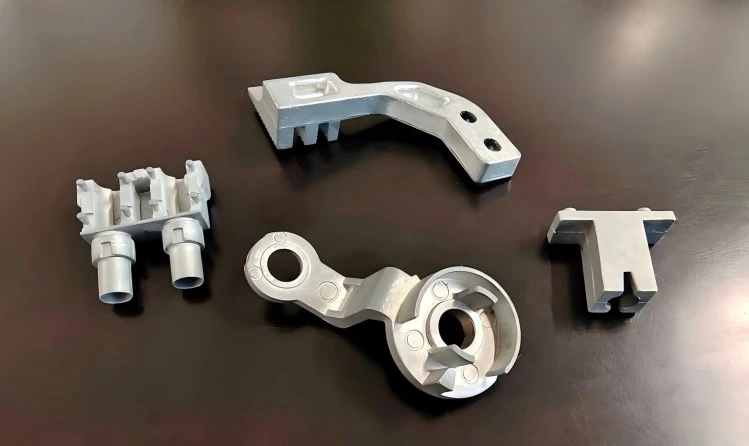Foundry technology is an efficient process used to produce complex metal components. Among various casting methods, zinc casting has become a popular choice for its ability to manufacture precise and high-performance parts. In this article, we will delve into the steps of zinc casting, its advantages, and its significance in the automotive industry.
Zinc alloy die casting is a primary method for producing strong and durable parts. The process requires melting zinc alloy and injecting it into a prepared mold.
Mold preparation: Carefully clean the die-casting mold to eliminate impurities. Lubrication is performed to facilitate the ejection of the cast parts. Finally, the mold is clamped with high pressure.
Injection: Melt the zinc alloy and pour it into the hot chamber of the injection machine. The molten zinc material is then injected into the die-casting mold under high pressure.
Cooling and Ejection: The molten zinc cools and solidifies within the die-casting mold, forming the desired shape. After cooling, loosen the mold to eject the solidified zinc casting. Ensuring the casting is fully solidified before ejection is crucial.
Trimming: To refine the final product, remove any excess metal produced during the casting process. Trimming molds, saws, or other suitable methods can be used for this purpose.
Zinc alloys can be cast with excellent precision and tight tolerances, eliminating the need for additional machining operations and reducing production costs. Zinc cast parts are renowned for their exceptional strength compared to other alloys and processes.
The low melting point of zinc allows for easy reshaping or redesigning of parts when necessary. This flexibility enables manufacturers to quickly adapt to design changes or customize components as needed.

Zinc alloy castings are ideal for producing complex parts. The excellent fluidity of zinc allows for the manufacturing of thin-walled parts with intricate shapes. Additionally, zinc castings have smooth surface finishes.
Zinc castings can undergo various surface treatments, such as polishing, painting, and electroplating. This versatility enhances the aesthetics and corrosion resistance of the final product.
The low melting temperature of zinc minimizes thermal stress on the mold during casting, extending the mold's lifespan.
Zinc alloys possess impressive mechanical properties, including high yield strength, elongation, and hardness. These characteristics ensure the durability and performance of zinc castings.
Zinc casting technology plays a crucial role in the automotive industry. Zinc die casting can efficiently manufacture a wide range of automotive components, including interior aesthetic parts, engine and underhood components, power steering systems, brake parts, air conditioning components, fuel systems, complex mesh casings, and electronic devices. The use of zinc castings ensures precise dimensions, high strength, and superior performance in these critical automotive applications.
Zinc is highly recyclable, contributing to sustainable production practices. Approximately 30% of zinc production comes from recycled or secondary sources. Collected zinc scrap is processed, separating zinc from other materials, and then used as raw material for producing metallic zinc. The recycling of zinc within the industry has been steadily increasing, reducing waste and conserving resources.
When mixed with other metals like tin or lead, the corrosion resistance of zinc is affected, reducing its ductility.
Zinc castings may become brittle when exposed to high temperatures, leading to a decrease in tensile strength. Likewise, low temperatures can impact the impact performance of zinc alloy parts.
Zinc casting technology offers numerous advantages, including precision, strength, and the ability to produce complex parts. Its application in the automotive industry underscores its importance in manufacturing critical components. With its recyclability and surface treatment potential, zinc casting provides an environmentally friendly and cost-effective solution. By understanding the process and benefits of zinc casting, manufacturers can leverage its capabilities to produce high-quality and durable products.